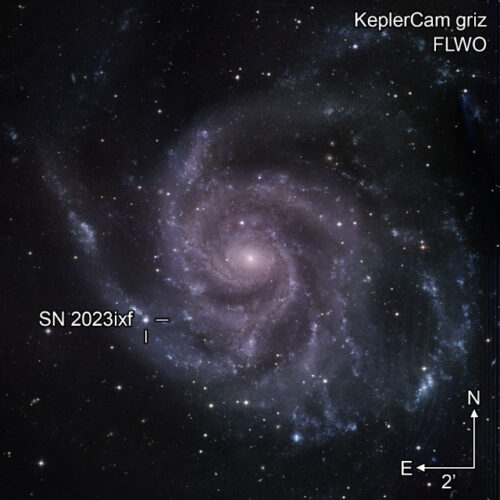
A remarkable loss of stellar mass before supernova 2023ixf
Two articles published in “The Astrophysical Journal Letters” report as many studies on the supernova cataloged as SN 2023ixf. Two teams of researchers with members in common examined the evolution of this supernova discovered in the so-called Pinwheel Galaxy. To do this, they used various instruments including some from the Center for Astrophysics (CFA) Harvard & Smithsonian which allowed observations in different electromagnetic bands. The results were different from what was expected from the explosion of a massive star with a delay in the time of the peak of the light pulse just before the explosion. The conclusion is that this was due to the presence of dense materials ejected from the star in the year preceding the supernova.





